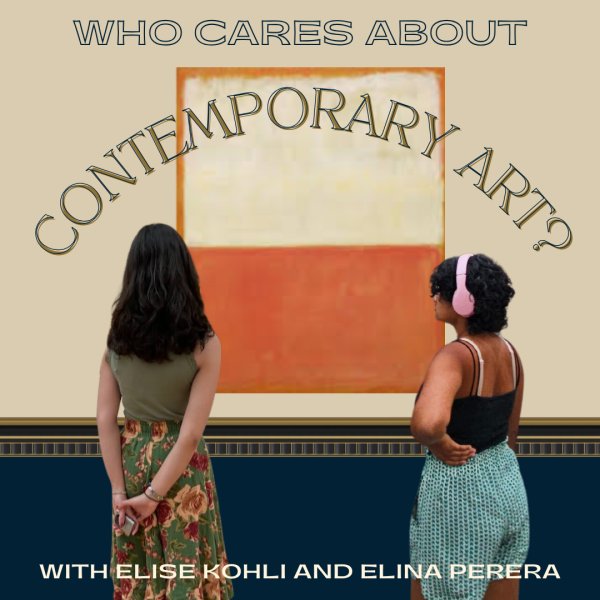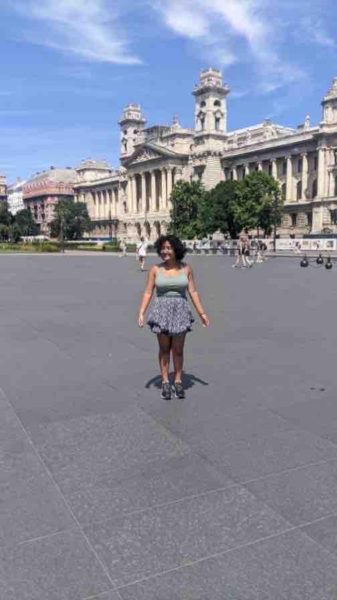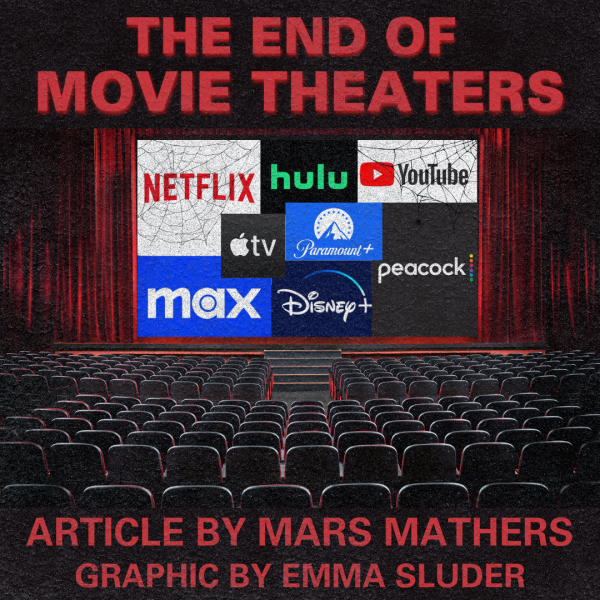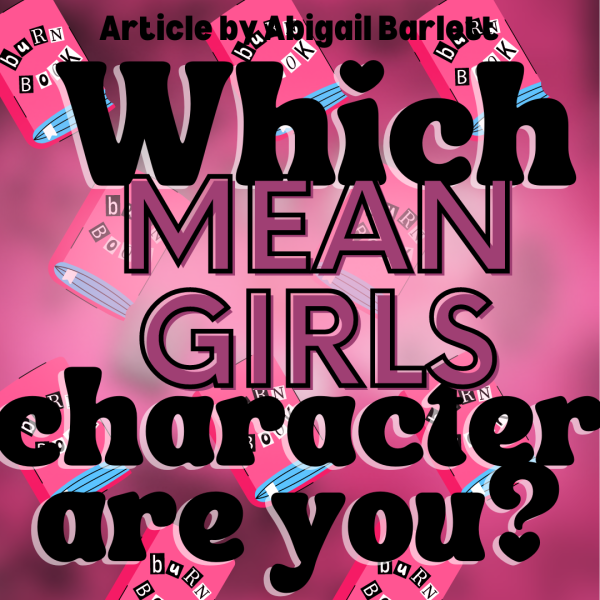
From the first cave paintings to the halls of the North Carolina Museum of Art, art brings people together. The desire to create symbolizes our humanity and often inspires us to regard the world around us with a more critical eye.
Allow us to paint you a picture: two teen girls stand in the middle of the MOMA, filming TikToks of the walls. Speaking over a jaunty tune comes an AI-generated voice. “Posing in front of art we think we could have made,” it says. The irony is not lost on us that, in this space, people are so far removed from the profoundly human process of admiring art.
Contemporary art can be simplistic in composition; take the works of Keith Haring or Mark Rothko for example. These artists are characterized by dynamic lines and blocks of color, respectively. When faced with the abject plainness of their work, it might be easy to imagine that you created it, but you didn’t. That’s the allure of contemporary art- it’s about the journey, not the destination. The feeling, not the image.
Hanging in the NCMA is Blessing of the Men, created by Clarrisa Sligh. This piece is an eye-catching work of contemporary art. Ostensibly it consists of cranes on strings hanging down to obstruct the view of men, photographed in their homes with their guard down. The easy interpretation simply remarks on the piece’s beauty. However, you need time, personal introspection, and external context to understand the depth and feeling of contemporary art. According to Sligh, these cranes represent bold decorations of power intertwined with delicacy, a curtain shielding photographs of men experiencing the repercussions of toxic masculinity in their households. At least, that’s how the NCMA put it.
But art is subjective. Being able to derive your own meaning as a viewer is both a privilege and an obligation. In much of his work, Felix Gonzales-Torres focused on this intimate relationship: art and audience. Perhaps the most obvious of his pieces on this matter is Somewhere/Nowhere. This piece involves two large piles of white paper placed in a room, usually at the entrance. One reads “somewhere better than this place,” and the other “nowhere better than this place.” What does it mean? That’s up to you. The idea here is to take the piece of paper that appeals most to you, whatever that may be. Gonzales-Torres’ interactive experience-based contemporary art asks the viewer to think about what they feel, not what they see. What is profound about contemporary art is the range.
Gonzales-Torres, Sligh, and Rothko all ask the same question: is art more than what we see? They each leave the viewer with a different answer. If the purpose of art is to evoke emotion and introspection, then contemporary art may be uniquely effective. The only way to get that experience, though, is by exploring the nuances that do not present themselves so quickly. Since taking these pieces at face value reduces their impact, no wonder passing patrons of museums like the NCMA might not understand what makes them so valuable. This is where the core issue lies- this idea of value.
From where is this value assigned? Is it technical skill? Emotional impact? Perhaps purely aesthetic appeal? This is all a matter of perspective. Aristocratic art curators of the Classical period valued technicality and realism. Art was an ostentatious display of wealth. Now, though, art is accessible to a much wider variety of people – in both the creation process and the act of viewing. Restricting the creation and appreciation of art to only those who have been privileged enough to receive technical education takes a powerful tool away from the public.
Art’s purpose is ever-changing, but what remains the same is the platform it creates and the beliefs it influences. Sculptor Ai Weiwei knew this when he created the installation known as Sunflower Seeds, which displayed millions of pieces of porcelain painted a uniform white sprawled out on the floor of the Tate Modern. Had the curators scoffed at the lack of detail or assumed there was no intention behind the piece, they would have missed a subtle comment on international economic exchange. Weiwei recruited hundreds of skilled Chinese artists within the city of Jingdezhen, the porcelain capital of the world, to individually hand paint each seed. In this newly found context, Sunflower Seeds speaks on the “Made in China effect,” as the Tate Modern calls it, or the dehumanization of laborers when they are viewed as an extension of the products they create. It is precisely the lack of technical skill in Weiwei’s work that makes it appeal to such a wide audience. The audience doesn’t need a complex understanding of color meanings and metaphors, or the relationship of light and shadow in early Baroque pieces. To those who do not want to learn more, the piece is simply beautiful. For the curious viewer, information is easily accessible. Weiwei is communicating a theme that impacts the everyday consumer in everyday language. That’s the power of contemporary art.
Now we find ourselves in a postmodern world that prioritizes consumerism. Traditional art has served the purpose of product and prestige, but contemporary art was born from an appreciation of the artistic process, which is not tangible. The danger here is viewing contemporary art as lesser because the artistic process cannot be sold. If you’re someone who finds contemporary art too simplistic or unimportant, it’s time to reevaluate why.
What do you find valuable in art, and why do you feel that way? It’s difficult to take the stance of appreciating art for art’s sake, especially when a capitalistic perspective tells us to do the opposite. But the human experience cannot be assigned a price, and, thus, neither can the creation of art. Perhaps it’s time we remove this idea of value entirely.
You don’t need to emerge wholly changed after the process of viewing art. You don’t even need to understand its meaning. But it’s disrespectful to deny that its creation has intention and purpose. We are incredibly privileged to have access to art and the ability to analyze the emotions it cultivates. Contemporary or not, art’s creation is profoundly human, so let’s find humanity in art once again.
Performativity and Its Addressee
What Is Contemporary Modern Art? | The Marshall Gallery.
Somewhere/Nowhere – Exhibitions – Felix Gonzalez-Torres Foundation








